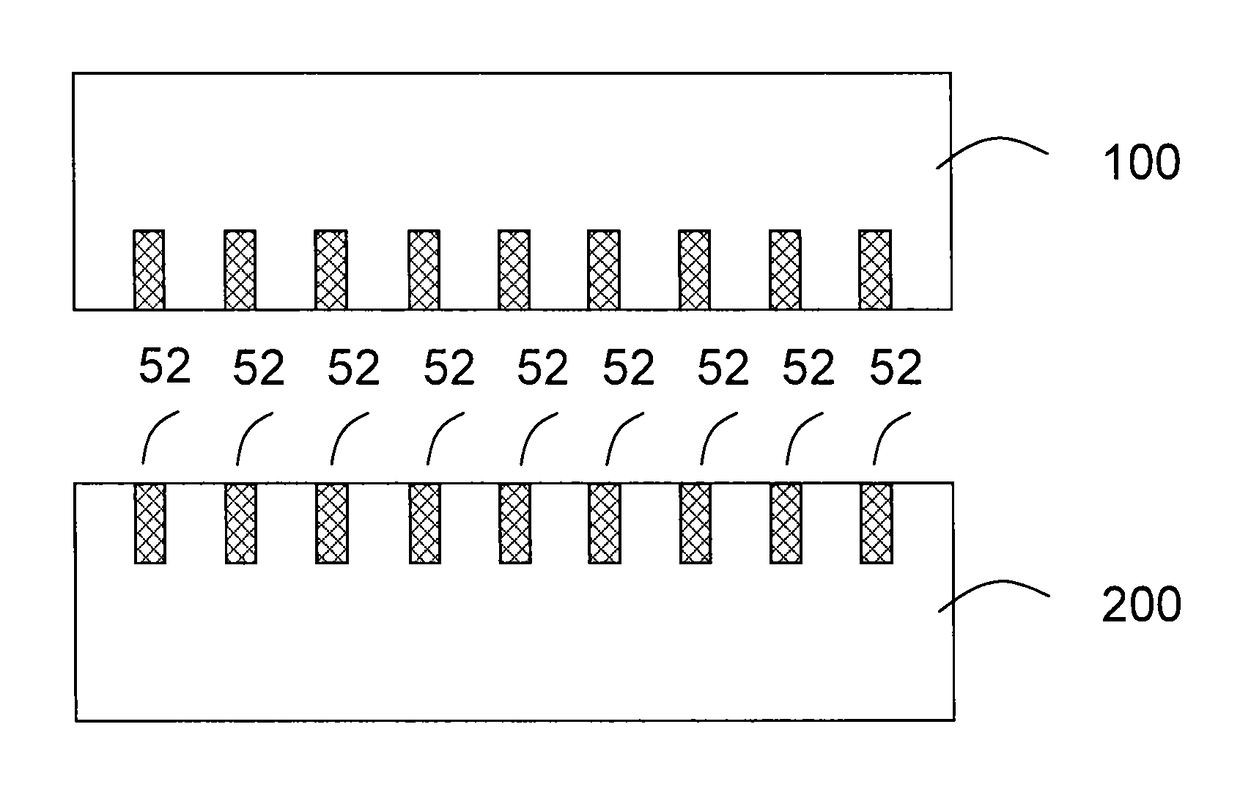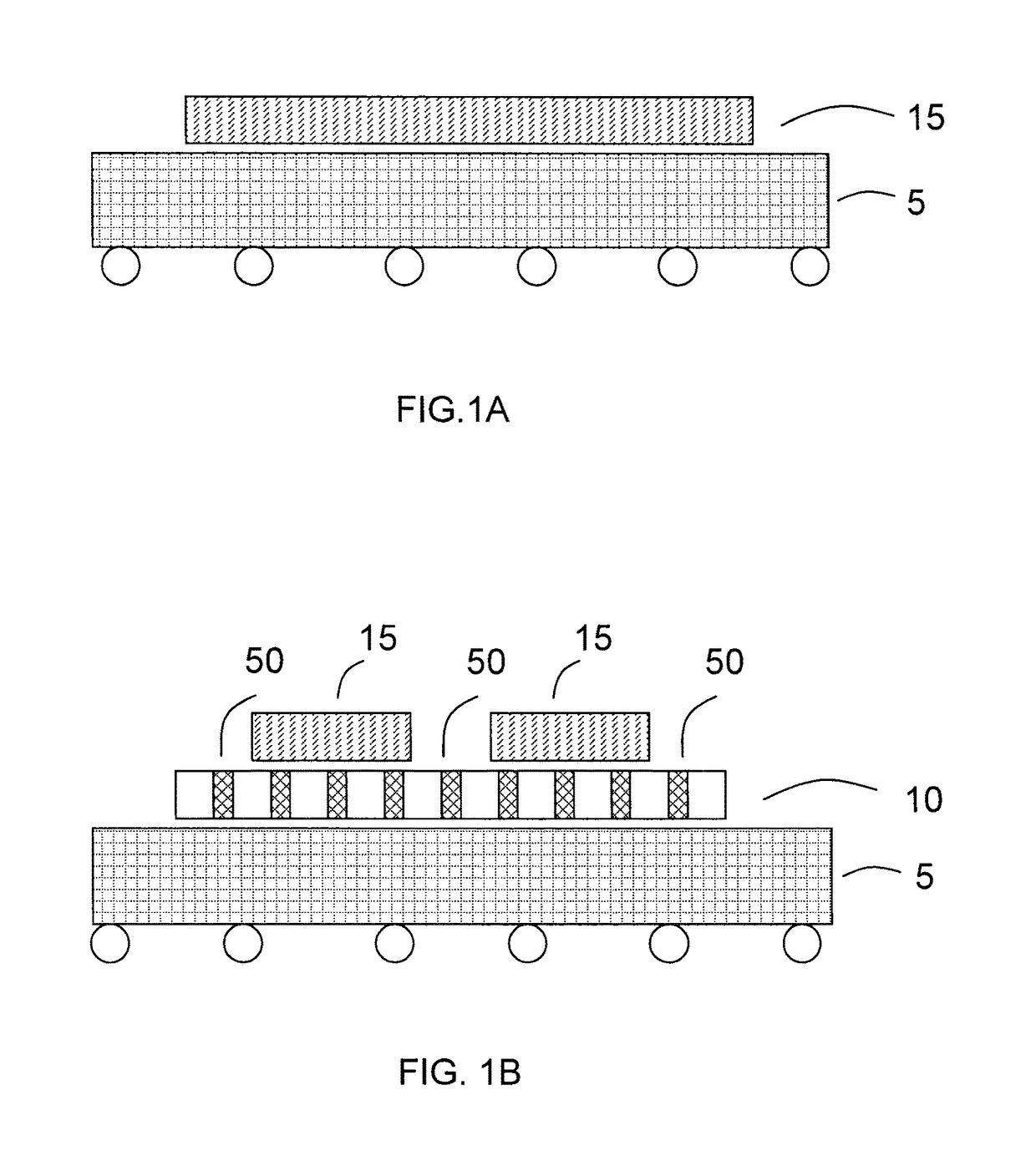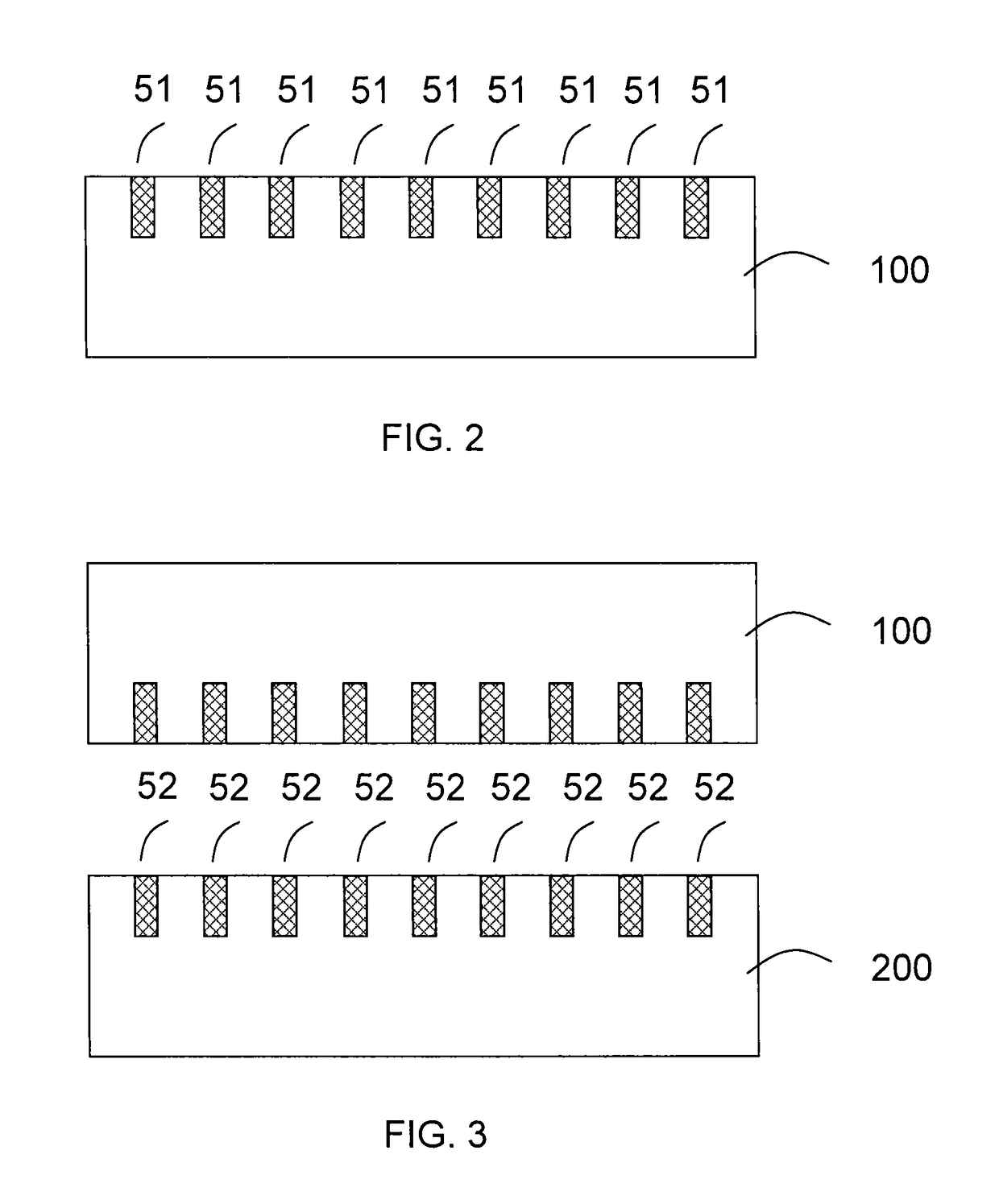Method for producing a mechanically autonomous microelectronic device
a microelectronic device and mechanically autonomous technology, applied in the direction of circuit thermal arrangement, printed circuit aspects, electrical apparatus, etc., can solve the problems of inability to standardise, difficulty in using, and inability to mechanically stabilize current interposers, so as to reduce the brittleness, deformation and bending of interposers
- Summary
- Abstract
- Description
- Claims
- Application Information
AI Technical Summary
Benefits of technology
Problems solved by technology
Method used
Image
Examples
Embodiment Construction
[0028]Before making a detailed review of the embodiments of the invention, optional characteristics which may be used in any combination or as alternative solutions are listed hereafter:[0029]The method comprises a step of assembling, including a direct bonding.[0030]The method comprises step of partially removing a part of the second substrate from a second face of the second substrate, opposite the first face of said second substrate, so as to reach the second portion of the electric via.[0031]The method comprises the production of at least another electric via simultaneously with said at least one electric via, with the vias comprising a material with thermal and electric properties so that said other electric via forms a thermal via.[0032]The method comprises a step of assembling at least another substrate on the first substrate and / or the second substrate.[0033]The method comprises a step of assembling comprising a step of aligning the first portion of the electric via of the f...
PUM
| Property | Measurement | Unit |
|---|---|---|
| diameter | aaaaa | aaaaa |
| thickness | aaaaa | aaaaa |
| height | aaaaa | aaaaa |
Abstract
Description
Claims
Application Information
 Login to View More
Login to View More - R&D
- Intellectual Property
- Life Sciences
- Materials
- Tech Scout
- Unparalleled Data Quality
- Higher Quality Content
- 60% Fewer Hallucinations
Browse by: Latest US Patents, China's latest patents, Technical Efficacy Thesaurus, Application Domain, Technology Topic, Popular Technical Reports.
© 2025 PatSnap. All rights reserved.Legal|Privacy policy|Modern Slavery Act Transparency Statement|Sitemap|About US| Contact US: help@patsnap.com



